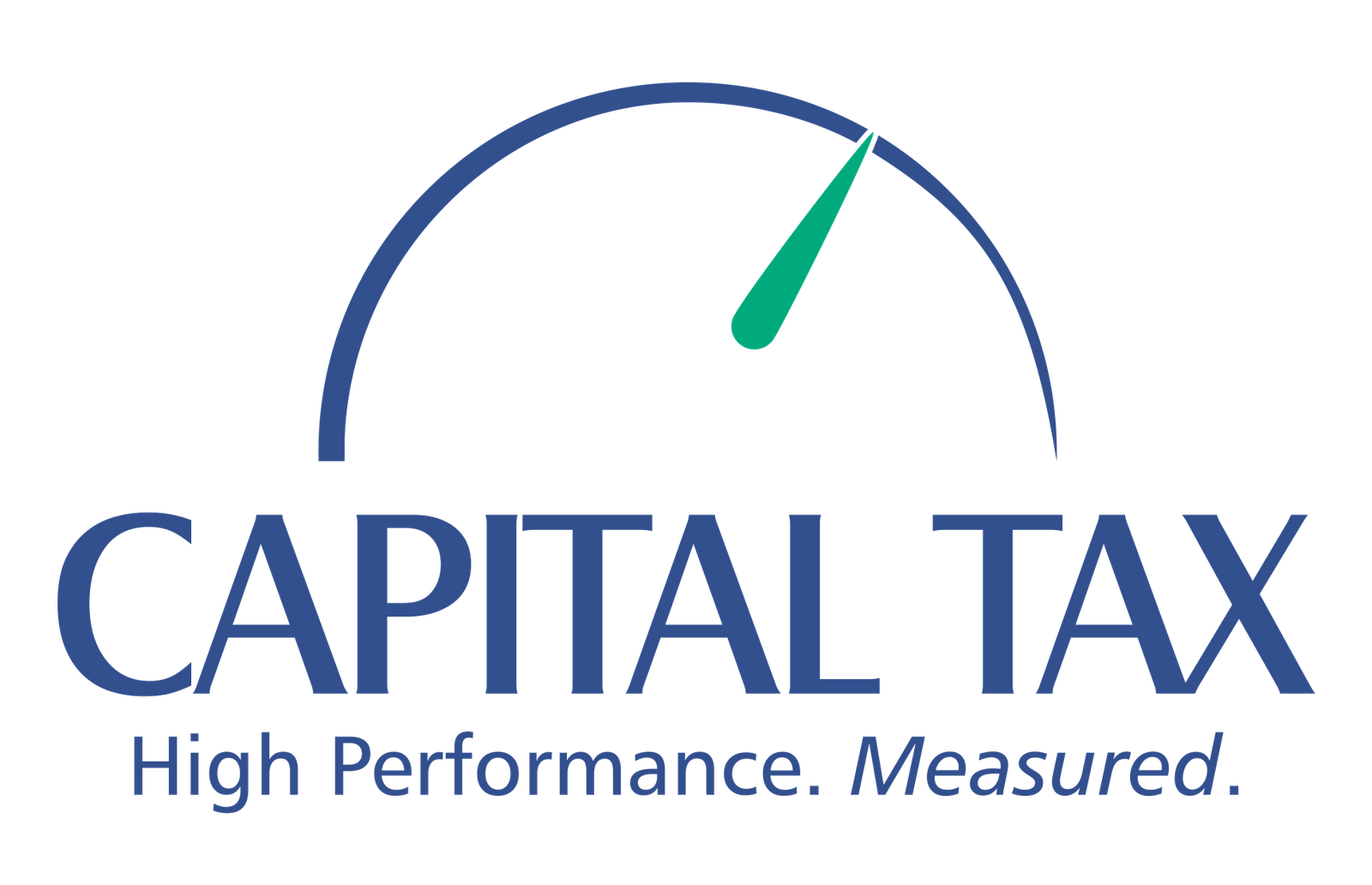How effective is financial risk management for your small business in California? Imagine safeguarding your business from unexpected financial pitfalls. By implementing robust risk management strategies, you can protect your assets and ensure long-term success. In the dynamic landscape of small businesses, understanding and mitigating financial risks can be a game-changer. Stay ahead of the curve by learning how to navigate potential challenges and secure your company’s future.
Understanding Risk Management
Definition
Financial risk management involves identifying, assessing, and prioritizing risks that could potentially impact a small business’s financial health. In the context of small businesses in California, this practice is crucial for ensuring sustainable growth. An effective strategy includes risk assessment, mitigation plans, and monitoring mechanisms.
Importance
Financial risk management plays a pivotal role in safeguarding the long-term viability of small businesses. By actively managing risks, businesses can foster stability and create opportunities for growth. In California, where market dynamics are ever-changing, strategic risk management is essential for navigating uncertainties and maintaining resilience.
Core Principles
The core principles of successful financial risk management revolve around proactive planning and continuous evaluation. These principles guide decision-making processes by emphasizing thorough risk assessment and the implementation of appropriate mitigation measures. Adherence to these principles enhances the overall effectiveness of risk management practices.
Types Of Risks In California
Financial Risk
Financial risks can severely impact small businesses in California, leading to cash flow issues and jeopardizing their financial stability. For instance, sudden market fluctuations, a potential risk, can result in revenue losses, affecting a company’s ability to meet its financial obligations. Small businesses may also face challenges with securing loans or investments due to poor financial management.
In some cases, small businesses may struggle with managing their cash flow effectively. This can lead to liquidity problems, making it difficult for them to cover day-to-day expenses or invest in growth opportunities. For example, delayed payments from clients or unexpected expenses can strain a business’s finances, hindering its overall operations and growth potential.
Small businesses in California may encounter various financial risk scenarios, such as currency exchange rate fluctuations, interest rate hikes, or unexpected changes in consumer demand. These uncertainties can significantly impact a business’s profitability and long-term sustainability if not managed proactively. Implementing robust financial risk management strategies is crucial for mitigating these potential threats and safeguarding the business’s financial health.
Strategic Risk
Strategic risks involve the potential for decisions or actions to negatively impact a company’s long-term goals and objectives. In California, small businesses must carefully assess the risks associated with their strategic initiatives to ensure sustainable growth. By taking calculated risks and embracing innovation, companies can position themselves for greater returns and competitive advantages in the market.
Voluntarily assuming strategic risks can open up new opportunities for small businesses by allowing them to explore uncharted territories or enter new markets. However, it is essential for companies to balance risk-taking with prudent decision-making to avoid detrimental consequences. Developing a comprehensive risk management strategy that aligns with the business’s strategic objectives is key to navigating uncertainties effectively.
To manage strategic risks effectively, small businesses should conduct thorough risk assessments, identify potential threats and opportunities, and develop contingency plans. By staying agile and adaptable in their strategic approach, companies can respond swiftly to changing market conditions and emerging risks while capitalizing on growth prospects.
Operational Risk
Operational risks encompass internal processes, systems failures, human errors, or external events that can disrupt a business’s daily operations. For small businesses in California, operational risks pose significant challenges that could impede productivity and profitability if left unaddressed. Identifying key operational vulnerabilities is crucial for enhancing resilience and ensuring smooth business operations.
Common examples of operational risks that businesses in California may face include technology failures, supply chain disruptions, cybersecurity breaches, or regulatory compliance issues. These challenges can have far-reaching implications on a company’s reputation, customer trust, and bottom line if not managed effectively. Implementing robust internal controls and contingency plans is essential for mitigating operational risks and maintaining business continuity.
Proactive measures such as regular performance monitoring, employee training programs, disaster recovery planning, and stakeholder engagement are instrumental in reducing operational vulnerabilities and enhancing organizational resilience. By prioritizing operational risk management practices, small businesses can minimize potential disruptions and build a solid foundation for sustainable growth.
Hazard Risk
Hazard risks encompass physical threats such as natural disasters, accidents, property damage, or legal liabilities that could adversely impact a business’s operations in California. Understanding these risks is essential for developing comprehensive risk mitigation strategies that safeguard assets and protect the business from unforeseen circumstances.
Different types of hazard risks faced by small businesses include property risk (e.g., fire damage), legal liability (e.g., lawsuits), natural disasters (e.g., earthquakes), or environmental hazards (e.g., pollution). These hazards have the potential to disrupt operations, cause financial losses, or tarnish a company’s reputation if not managed effectively. Implementing preventive measures and insurance coverage is critical for minimizing the impact of hazard risks on business continuity.
Strategies for minimizing the impact of hazard risks on business operations include conducting thorough risk assessments, implementing safety protocols and emergency response plans, investing in disaster recovery solutions, and ensuring regulatory compliance. By proactively addressing hazard risks through effective risk management practices, small businesses can enhance their resilience against unforeseen events and protect.
Identifying Financial Risks
Risk Identification
Small businesses in California face various financial risks that can impact their operations. Identifying these risks is crucial for effective financial risk management. Team collaboration plays a vital role in this process, as different perspectives can help uncover potential risks that may go unnoticed by individuals. Strategic planning is also essential, as it allows businesses to anticipate and prepare for potential challenges.
To enhance the risk identification process, small businesses can implement regular risk assessments to identify new risks and reassess existing ones. This involves conducting thorough analyses of internal and external factors that could affect the business financially. Fostering a culture of risk awareness among employees can help in early detection and mitigation of potential risks.
Tools And Techniques
Various tools and techniques are available to aid small businesses in managing financial risks effectively. One such tool is a risk register, which helps businesses document identified risks, their potential impact, and mitigation strategies. Risk mapping is another technique that visually represents different types of risks faced by the business, making it easier to prioritize them based on severity.
Technology plays a significant role in streamlining risk identification and assessment processes for small businesses. Risk management software automates the collection of risk data, analysis, and reporting, saving time and improving accuracy. Leveraging data analytics allows businesses to identify patterns and trends in their financial data, enabling proactive risk management strategies.
Utilizing risk management tools offers several benefits for small businesses in California. These tools enable businesses to make informed decisions based on comprehensive risk assessments. By having a clear overview of potential risks, businesses can develop strategies for risk mitigation and contingency planning. Moreover, utilizing these tools fosters a proactive approach to managing financial risks rather than reacting to crises when they occur.
Analyzing Business Risks
Risk Analysis Methods
Risk analysis in small businesses involves identifying potential risks that could impact business operations. One common method is the SWOT analysis, which assesses Strengths, Weaknesses, Opportunities, and Threats. This technique helps businesses understand their internal capabilities and external threats.
Another vital method is scenario analysis, where businesses create hypothetical scenarios to evaluate how different factors can affect their operations. By simulating various situations, small business owners can prepare for unexpected events effectively.
Risk mapping is also crucial for visualizing risks across different areas of a business. By mapping out risks, business owners can prioritize mitigation strategies based on the likelihood and impact of each risk.
Impact Assessment
Assessing the impact of risks on business operations is essential for effective risk management. Through impact assessment, small business owners can determine the potential consequences of specific risks on their daily activities and long-term goals.
By conducting probability-impact assessments, businesses can categorize risks based on their likelihood of occurrence and the severity of their impact. This classification helps prioritize which risks need immediate attention and which ones can be monitored over time.
Regular impact assessments enable small business owners to stay proactive in managing risks. By continuously evaluating the effects of potential threats, businesses can adjust their strategies to minimize negative impacts and seize opportunities for growth.
Evaluating Management Options
Risk Evaluation
Risk evaluation in financial risk management involves assessing various factors to determine the effectiveness of implemented strategies. Key criteria such as potential impact, likelihood of occurrence, and existing control measures are crucial. By analyzing these aspects, businesses can identify vulnerabilities and areas needing improvement. This evaluation process is essential for understanding the current risk landscape.
Conducting comprehensive risk evaluations allows small businesses in California to gauge the success of their risk mitigation efforts. By regularly assessing risks, companies can adapt their strategies to evolving threats and market conditions. It enables them to make informed decisions on resource allocation and prioritize high-impact areas for effective risk management.
To ensure a thorough evaluation, small businesses should follow specific guidelines. These include identifying all potential risks relevant to the business operations, determining the probability of occurrence for each risk, and evaluating the adequacy of existing controls. Regular reviews and updates to the evaluation criteria are essential to maintain relevance and accuracy.
Prioritization
Prioritizing risks based on their potential impact is a critical aspect of effective financial risk management. By focusing on high-impact risks first, businesses can allocate resources efficiently and address the most significant threats promptly. Prioritization helps in streamlining risk mitigation efforts for maximum effectiveness.
Assigning priority levels to different risks requires a structured approach. This involves categorizing risks based on their severity, likelihood of occurrence, and potential consequences. By establishing clear criteria for prioritization, businesses can make well-informed decisions on where to concentrate their risk management efforts.
A structured approach to risk prioritization offers several benefits for small businesses in California. It ensures that limited resources are allocated wisely towards managing risks with the highest potential impact. It facilitates proactive decision-making by addressing critical risks before they escalate into major issues.
Selecting Strategies For Management
Mitigation Techniques
Mitigating risks in a small business involves identifying potential threats and taking proactive steps to minimize their impact. One effective technique is diversification, spreading investments across various assets to reduce exposure to any single risk. Another approach is creating contingency plans to address unforeseen events promptly.
Implementing regular risk assessments can help small businesses stay ahead of potential issues. By conducting thorough evaluations, companies can identify vulnerabilities and develop strategies to mitigate them effectively. For instance, a retail store might implement security measures like surveillance cameras and alarm systems to deter theft.
Successful small businesses often employ preventative measures such as employee training programs on safety protocols or cybersecurity best practices. These initiatives not only reduce the likelihood of risks but also enhance overall operational efficiency. By fostering a culture of risk awareness, organizations can proactively address challenges before they escalate.
Pros:
- Enhances operational efficiency
- Builds resilience against unforeseen events
- Improves decision-making based on informed risk assessments
Cons:
- Requires time and resources for implementation
- May not eliminate all risks completely
Transfer Strategies
Transferring risks involves shifting the financial burden of potential losses to external parties or insurance providers. Small businesses can opt for insurance policies that cover specific risks like property damage, liability claims, or business interruption due to unforeseen events. This strategy helps protect the company’s financial stability in case of emergencies.
One advantage of transferring risks is financial protection, ensuring that the business can recover from unexpected setbacks without facing significant financial strain. By transferring certain risks through insurance, small businesses can focus on growth and innovation without constant worry about potential losses.
When selecting risk transfer strategies, small businesses should carefully assess their unique needs and budget constraints. Consulting with insurance professionals or risk management experts can help in identifying the most suitable coverage options tailored to the company’s specific requirements.
- Consider different insurance providers for competitive rates.
- Review policy terms and conditions thoroughly before committing.
Implementing Risk Management Plans
Action Plan Development
Developing an actionable risk management plan involves several key steps. Firstly, identify and assess potential risks that could impact your small business in California. Next, prioritize these risks based on their likelihood and potential impact. Then, establish clear objectives for each risk, outlining specific actions to mitigate them.
Clear objectives and timelines are crucial in risk action plan development. By setting specific goals and deadlines, you create a sense of urgency and accountability within your organization. This clarity helps in tracking progress and ensuring timely implementation of risk mitigation strategies.
To effectively communicate the risk action plan to stakeholders, utilize simple, straightforward language. Clearly outline the identified risks, proposed solutions, responsible parties, and expected outcomes. Engage stakeholders in discussions to gather feedback and address any concerns or questions they may have.
Resource Allocation
Resource allocation is essential for implementing risk management strategies successfully. Allocate sufficient financial resources, human capital, and technological tools to support your risk mitigation efforts. Prioritize resources based on the identified risks and their potential impact on your business operations.
Optimizing resources is key to mitigating risks effectively. By allocating resources strategically, you can address high-priority risks while maximizing efficiency and cost-effectiveness. Regularly review resource allocation to ensure alignment with evolving business needs and changing risk landscapes.
Aligning resource allocation with business priorities is critical for effective risk management. Consider the strategic objectives of your small business in California when allocating resources for risk mitigation activities. Ensure that resources are allocated in a way that supports overall business growth and sustainability.
Monitoring And Reviewing Risks
Performance Tracking
Small businesses in California can significantly benefit from tracking performance metrics related to risk management. By monitoring key indicators, such as cash flow, debt levels, and market volatility, businesses can assess the effectiveness of their risk mitigation strategies. Utilizing tools like financial ratios and budget variance analysis can provide valuable insights into the business’s financial health.
To evaluate the success of risk mitigation efforts, small businesses can use performance tracking tools such as risk heat maps, which visually represent risks based on their likelihood and impact. Regular financial statement analysis can help identify trends and potential areas of concern. By consistently tracking these metrics, businesses can proactively address emerging risks and make informed decisions to protect their financial stability.
Examples of performance tracking techniques for small businesses include:
- Regularly updating financial forecasts to reflect changing market conditions.
- Conducting scenario analysis to assess the impact of various risk scenarios on the business.
- Implementing key risk indicators (KRIs) to monitor specific risks that could impact the business.
Review Process
Regularly reviewing and reassessing risks is essential for small businesses in California to stay ahead of potential threats. The review process involves identifying new risks, evaluating existing ones, and adjusting risk management strategies accordingly. By conducting comprehensive risk reviews on a consistent basis, businesses can adapt to changing business environments and ensure long-term sustainability.
Ongoing risk reviews offer several benefits for small businesses, including the ability to identify emerging risks early on and implement timely mitigation measures. By staying proactive in risk management, businesses can enhance their resilience against unforeseen events and maintain a competitive edge in the market. This continual assessment also fosters a culture of risk awareness within the organization, promoting accountability and transparency.
When conducting comprehensive risk reviews within small businesses, it is crucial to follow these guidelines:
- Schedule regular review meetings involving key stakeholders from different departments.
- Use a structured approach to assess risks based on probability, impact, and mitigation strategies.
- Document all findings and action plans resulting from the review process to track progress over time.
Insuring Against Risks
Insurance Options
Small businesses in California benefit significantly from exploring insurance options as a crucial element of their risk management strategy. By diversifying their risk exposure through insurance, businesses can safeguard themselves against unforeseen events that could potentially lead to financial distress. It is essential for small business owners to understand the various types of insurance coverage available to them in California.
- General Liability Insurance: Protects businesses from third-party claims of bodily injury, property damage, and advertising mistakes.
- Property Insurance: Covers physical assets such as buildings, equipment, inventory, and furniture against damages or loss due to fire, theft, or vandalism.
- Workers’ Compensation Insurance: Mandatory for businesses with employees in California and provides benefits to employees who suffer work-related injuries or illnesses.
When selecting insurance policies, it is imperative for small business owners to assess their specific needs and risks. Conducting a thorough evaluation of potential risks faced by the business will help in choosing the right insurance policies that provide adequate coverage. By customizing insurance coverage to address specific vulnerabilities, businesses can effectively mitigate potential financial losses in the event of an unforeseen incident.
Cost-Benefit Analysis
Implementing financial risk management strategies necessitates a comprehensive cost-benefit analysis to determine the viability and effectiveness of such measures. While there are costs associated with implementing risk management practices, the long-term benefits far outweigh these initial expenses. Businesses that proactively manage their financial risks are better equipped to navigate uncertainties and fluctuations in the market.
Summary
Understanding, identifying, analyzing, and managing financial risks in your small business in California is crucial for its survival and growth. By evaluating management options, selecting appropriate strategies, implementing risk management plans, monitoring risks, and insuring against potential threats, you can safeguard your business’s financial stability. Take proactive steps now to protect your business from unforeseen challenges and ensure its long-term success.
Remember that effective financial risk management is not a one-time task; it requires continuous assessment and adjustment. Stay vigilant, stay informed, and stay prepared to tackle any financial risks that come your way. Your small business in California deserves the best chance at thriving – make sure you give it by prioritizing sound financial risk management practices.
Frequently Asked Questions
1. How Can Understanding Risk Management Benefit My Small Business In California?
Understanding risk management helps you anticipate and mitigate potential financial threats, ensuring the stability and growth of your small business in California. By identifying risks early on, you can proactively implement strategies to safeguard your finances and operations.
2. What Are The Types Of Financial Risks That Small Businesses In California Commonly Face?
Common financial risks for small businesses in California include market risk, credit risk, operational risk, and compliance risk. Market risk pertains to fluctuations in market conditions affecting your business, while credit risk involves potential losses from customers failing to pay.
3. How Do I Identify Financial Risks Specific To My Small Business In California?
To identify financial risks specific to your small business in California, conduct a thorough assessment of your operations, finances, market trends, and regulatory requirements. Utilize tools like SWOT analysis and financial statements review to pinpoint areas vulnerable to risks.
4. Why Is It Essential To Monitor And Review Risks Regularly For Effective Financial Risk Management?
Regular monitoring and reviewing of risks allow you to adapt quickly to changing circumstances, detect new threats early on, and fine-tune your risk management strategies accordingly. This proactive approach ensures that your small business remains resilient and prepared for any challenges.
5. How Can Insuring Against Risks Play A Crucial Role In Protecting My Small Business In California?
Insuring against risks provides a safety net for your small business in California by transferring the financial burden of certain unforeseen events to an insurance provider. This protection can help mitigate losses due to incidents such as property damage, liability claims, or business interruption.

Financial Risk Management For Small Businesses In California: Strengthen Your Business With Capital Tax
Navigating the financial risks and challenges faced by small businesses in California requires a strategic approach. Capital Tax is your dedicated partner, offering specialized financial risk management services tailored to the unique needs of small businesses in this dynamic state. Our deep understanding of the financial landscape, including state and federal regulations, enables you to focus on growing your business while we manage the complexities of financial risk and compliance.
At Capital Tax, we are committed to delivering comprehensive financial risk management solutions that support the stability and growth of your business. From identifying potential financial risks to implementing strategies that minimize exposure and enhance financial health, our experienced team is equipped to guide you through every aspect of managing financial risk. Schedule a consultation with us to explore how we can assist in fortifying your business’s financial defenses.
Don’t let financial uncertainties hinder your business’s growth potential. Partner with Capital Tax for expert financial risk management advice and strategies specifically designed for small businesses in California. Elevate your financial strategy and move towards a more secure and prosperous future.
Disclaimer
The content on this website is for informational and entertainment purposes only and should not be seen as accounting advice. It’s advisable to consult with a qualified accountant or accounting firm for advice specific to your financial situation. Do not base your actions solely on the information provided here without seeking expert advice. The information on this website may not always reflect the latest in accounting practices and regulations. We are not liable for any actions taken or not taken based on the site’s content, to the maximum extent permitted by law.





